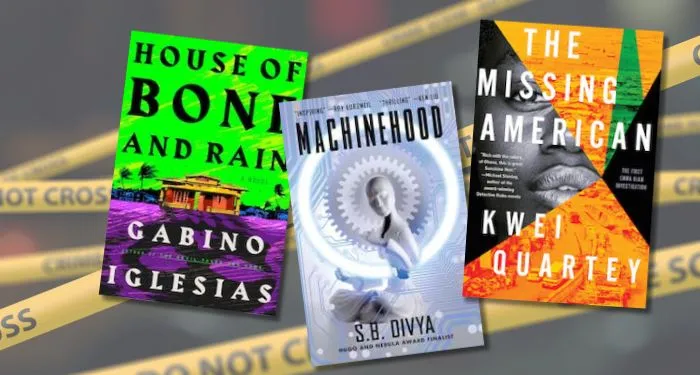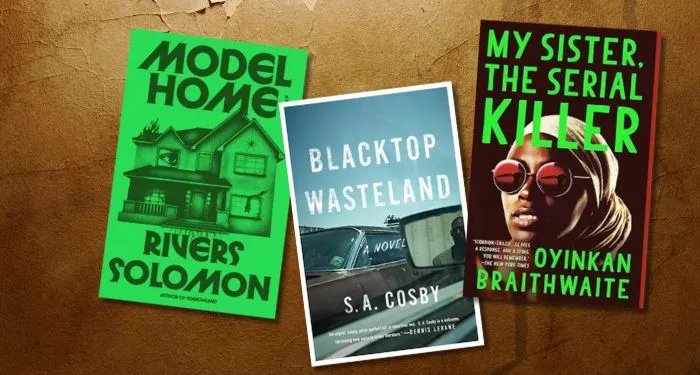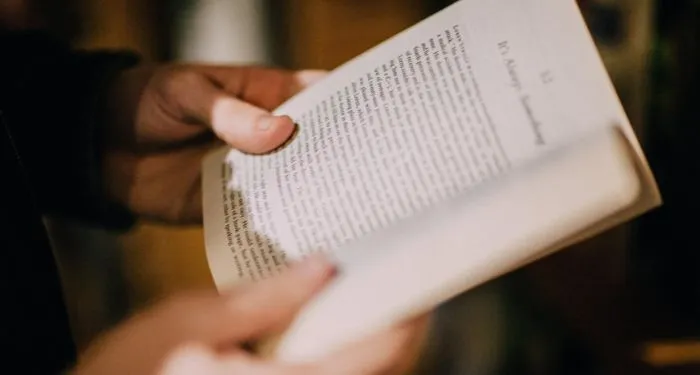Sasha Weiss is the first editor I ever worked with on a reported piece, at the time a new type of assignment for me. I was writing about the mysterious Elena Ferrante and I was entirely unsure of what to do, but I soon discovered that I could put my faith in Weiss as part teacher, part therapist:
She has a unique way of pushing her writers, forceful yet compassionate. Indeed there are many paradoxes in my working relationship with Weiss, now the culture editor at The New York Times Magazine, who is at once electric with insight and totally calm in demeanor. In an e-mail, Sam Anderson, one of her long-time writers at the Times, employed a memorable metaphor to describe Weiss’s process: “We have a running joke—not really a joke—about how editing me is like potty training.” She was delighted by the analogy.
In our conversation, Weiss and I talked about potty training writers—about patience, perseverance, and a willingness to let people make mistakes when risking something new.
Tell us how you got from college to where you are today.
By being a dilettante with a lot of luck. As an undergraduate at Harvard, I worked at the college literary magazine, The Harvard Advocate, and that was the beginning of my love of magazine-making. We would debate for hours about our submissions. It was a culture of seriousness but also playfulness and collaboration, and catholic interests—of learning to be someone who doesn’t want to settle on any one subject, but is omnivorous. That’s the kind of person who does well at a magazine.
I had an internship at The New Yorker with Alice Quinn, who was a wonderful poetry editor, and I got to gobble up poetry submissions and learn from her. She was in Elizabeth Bishop’s archives writing a book about Bishop. Working with Alice felt like drinking from the fount of poetry. After I graduated, I worked for Daphne Merkin, a memoirist and a critic and a wonderful character. She was another step in my omnivore’s journey. She is a very wide reader, and part of my job was organizing her books. I drank in everything from New York Review Books Classics to early twentieth-century feminist literature to psychoanalytic literature. She also watched everything, saw everything, went to every screening, was interested in fashion, was interested in sex. She was interested in everything. I saw that being a successful critic and writer is about drinking in the world.
Then—and this is where my luck really hit—I applied for an internship at The New York Review of Books, which at the time was still being edited by Robert Silvers and Barbara Epstein, the founding editors. She died just a couple days after I arrived, which was a heartbreak. I wish I’d gotten to know her, but I did get to work for Bob. I honestly don’t know why he hired me, because I really bombed the interview.
How did you bomb it?
He wanted to talk to me about my science courses. I’d taken a physics course, but I wasn’t ready to discuss it. I had written my thesis about Emily Dickinson. He was quizzing me on which biographies of Dickinson I had read, and my answer was none, because I had been practicing, you know, close reading. I don’t know why he liked me, but he did.
It was an incredible place to learn, in part because Bob would sit in the front of the office at a huge desk, which I always thought of as a control center. He had four or five assistants at a time. He never learned to type. We were all taking dictation and fielding everything in his outbox. He would fling things into his outbox—letters to Joan Didion and comments on manuscripts by Colm Tóibín and Zadie Smith and all of the great writers of The New York Review of Books—and we would type them. He lived his editing life out loud. It was a kind of mind meld. We really were menial assistants, but this was a chance to really understand how a great editor does his work. All of his phone calls, all of his correspondence, all of his editing were there for us to observe.
I was there for six years, and happened to be there when the Internet was becoming a major publishing platform and blogs were rising. Bob was very controlling in an amazing way. He was a grand man of letters who understood that the Internet needed a little more freedom, and that it was a way to let younger people try things. That was when I first started to really edit.
I went from there to The New Yorker, which was also developing its online presence. I helped relaunch the literary vertical and published reviews and essays for a number of years. Then I went to the Times Magazine, another stroke of luck, because I had not been trained as a journalist, I’d been trained in criticism. I think I was trained really well, because I got to be in the heart of these amazing institutions that were practicing criticism at the highest level, working with writers who really showed me what it was to draft, and to improve, a piece. But I had an interview with Jake Silverstein, the wonderful editor of the Times Magazine, and he hired me. Ten years later, I’m still there.
Several editors in this series have talked about how Bob never learned to type and have described their counter formation to this limitation. They describe editing in a much more embodied way. I want to connect that to what Sam Anderson said about you being a supreme potty trainer. Can you meditate on the obviously gendered nature of how people describe editing?
I do think some of my ministering to writers was something that I learned from Bob Silvers, because Bob trusted writers. It was a paradox. He was controlling, and he had a very clear idea of what he wanted to do with “the paper,” as he called it, but part of that was identifying brilliant minds and allowing them to flourish, and giving them surprising assignments. He’d send a book in a FedEx package, so it would arrive like a bolt from the blue at their door. His assignment letters said very little: “I thought you might be interested in this book. Might you write a piece of about 4500 words? Please see what can be done.” I learned this sense of trust that the writer’s mind is the thing you’re cultivating and valuing above all. Yes, you have to kind of shape it to the needs of a publication, but there’s some essential spirit of the writer that you’re trying to harness and relate to and encourage.
But with the potty-training metaphor—which I actually fully accept—there’s a real intimacy with writers on the page that I enjoy. I think writing is an ultimate act of vulnerability. It’s something anybody who’s written anything recognizes. There’s always the gap between your inner self and what you’re able to get on the page. The editor’s job is to help bridge that gap. The only way to do that is to be really involved, to be a witness and a companion. I embrace that. Because I’m a writer myself, I know just how humiliating it can feel. I want to be present for my writers. Now, this has its limits. At a certain point, one must produce and one must learn to do it alone. But I like to be with them as much as I can.
What is the difference between you as a writer versus you as an editor? Are those roles continuous for you? Are you always editing yourself as you’re writing? Or does committing to that vulnerability mean not being an editor at the same time?
As a writer, I’m very trained in the forms and the moves that work for the Times Magazine. At the same time, I’m a totally neurotic wreck, and I’m in need of care when I’m the writer, and I embrace that role. I’m shamelessly needy and vulnerable with my beloved editor, Ilena Silverman, who’s infinitely patient and potty trains me. There’s a lot of support and collaboration in that office, which is distinct from other places I’ve worked. Not to knock the other places, but the Times Magazine is very collaborative. There is a real emotional intelligence applied to the work.
I don’t know if I can totally answer the question about the writing and the editing selves. I think I bring a lot of my writer-self to editing, not only my awareness of how vulnerable writers can feel, but an intuition about the way that a piece unfolds. As editors, we have to impose structure and order. I’ve learned how to think in sections. There are some basic moves that we make when we get a seven-thousand-word piece that’s awash in ideas. The first question is, “This is a piece in five sections. What are the sections and what are they doing?” Most pieces, especially really good ones, have some kind of secret spiritual life coursing underneath all of that structure. Part of the task is trying to locate the emotional center of the piece for the writer and draw it out. When you have time to do that, you can find a lot of depth in that attempt and make the attempt into a concrete thing. When you don’t have time, sometimes you have to say, “Okay, this is a piece in five sections, and we’re blocking it out.”
You and I have worked on one piece together, but we’ve talked about several pieces that haven’t come to fruition. The one that I remember most clearly was a profile of Jacqueline Rose in 2020. We worked together on a relatively long proposal for that piece, and then it didn’t move forward. I’m curious how you feel about the moments when you want something to go forward at the magazine, but the editorial board decides it’s not quite right for the magazine, or the writer isn’t the right person for the piece.
I used to get brattily angry. I remember being very angry in the meeting when this idea did not go forward, and feeling indignant. But there’s something fun for me about being a literary weirdo in an institution that is kind of square. Now, I say that with many caveats about both myself and the institution. I think that the Times Magazine publishes a lot of daring writing, and, if you look in our archives, we’ve done many essays that I think of as uncategorizable, where personal writing and criticism and reporting all converge in an unpredictable and rich way. We have a lot of really strong stylists who write for us. But the wash of the Gray Lady still covers us all. There can be a staidness to it, or maybe solemnity is the better word. I like to make a little bit of mischief in those pages.
As I’ve gotten older, as I’ve gotten more experienced, as I’ve been there longer—I probably would have framed that piece on Rose differently. We are a global news organization that has to reach people. We did a piece a few years ago about the Icelandic writer Sjón, for instance, and we’ve done many pieces about filmmakers who make small films that are really beautiful and important. But even if 40,000 people read a piece about a novel in translation, or 80,000 people, that’s a lot more readers than the book is going to get. Because we’re such a big platform, we have the chance to telegraph to the reader very clearly why they should know about something, and why that thing explains something about the way they live, about their world, about some new idea that’s floating out there. We did a piece about Silvia Federici, a philosopher and theorist, and we were able to connect her ideas about women’s labor and care work to the pandemic and the related discourse that was happening. So probably I would have now taken the Rose—
Well, psychoanalysis is in vogue in a different way now than it was when we pitched that piece.
We could sit here and start to reframe it, right? This is the thing I love about editing. The collision and tango of two minds trying to figure out how to do something together.
A unifying theme of this event series is that every good editor is trying to make a little mischief within the institutional constraints of their particular publication. You can’t run a piece that is not legible as a New York Times Magazine piece or a New Yorker piece or a New York Review of Books piece, but you can do something within the limitations that are set for you by your institution. How would you describe the limits of the different institutions where you’ve worked?
The New York Review of Books has a more specialized and cloistered audience, a devoted audience, a highly intellectual audience, an audience that I think has a clubiness, in a good way. There’s a kind of shared language, and that has advantages and deficits. It’s possible to write in a very high register, with the assumption that your reader shares a set of theoretical terms or is already versed in the history of a certain place or a certain time. But sometimes certain assumptions about foreknowledge actually can make for a lack of clarity. And that’s also part of the pleasure. It’s aspiration. For me, as a twenty-three-year-old, walking into that place and beginning to read the magazine, I began to know all that I didn’t know, and I longed to know it so that I could participate in the conversation. There’s something wonderful about being invited into a rarefied, rigorous place where there’s the promise of all this knowledge, and that you too can be part of the conversation.
The Times Magazine, its reach is so vast. The challenge is being able to broadcast what is sometimes esoteric or complex, nuanced thinking and writing in our pages with the clarity to communicate why certain ideas matters. I used to really resist that. My bratty response was: We’re not in the business of selling. But I don’t think it’s selling, I think it’s inviting the reader in and then hooking them. This can be reflected in structure, too. The lead of a story is so important to tell the reader why you’re here, and also hopefully to amuse and maybe titillate them. Then, further down in the story, you can complicate and meander a little bit.
Often, I open up the pages of the magazine and I try to spot a story that you’ve edited. Section one starts with the writer dancing to Bad Bunny before section two transitions into the history of Puerto Rico. Or it starts with a writer talking about his mustache, before section two transitions into the role of the mustache in the history of the NAACP. Is this just my imagination or do your pieces make that distinctive move of opening with the personal anecdote then pivoting to the cultural or the historical context?
There is a certain kind of essay that I’m drawn to, and that I should think of a better name for, but it is that “uncategorizable” essay, which is what I call it in my head. Often the personal is the probe. It begins somewhere in the writer’s body, in some neurosis or in some problem or question. The writer is going somewhere, taking some kind of journey, whether it’s intellectual or actually going somewhere in the world and reporting. Then it’s like a Matryoshka doll—more maternal metaphors—and it keeps opening and deepening, and it goes very far afield from the writer’s own preoccupation with themself. I’m very interested in marrying personal writing to reporting, by which I mean being out in the world, seeing things, writing them down, and then having to figure out how they relate to your initial quest.
The third element to this is cultural criticism, or some essayistic consideration, usually of a work or works of art, that gets married to the personal quest and the reported journey. When a piece promises to have those elements—especially when I don’t really know how they’re going to relate and how it’s going to work—that’s when I want to assign something. When it’s amorphous but tantalizing.
What is the biggest wrong turn those kinds of essays take in the first draft, and how do you think about setting the writer on a more productive track?
Often, it’s a question of proportion. I was looking back at a wonderful piece by Sam Anderson about Michelangelo’s sculpture of David. It started with the realization that David’s ankles were cracking, which was momentarily international news. Turned out they’ve been cracking for a long time, and everybody who ever cared for the statue knew this. But the piece is about the history of the sculpture. It’s a very strange history, full of error and mistake. The sculpture sat out in the rain and was shat on by birds and then became the David. Eventually it turns into a meditation on perfection, and the perils and problems of perfection. It begins with Sam encountering this work of art as a young man and thinking, This is what I want to be. I want to make something this good. It turns out the sculpture is riddled with all kinds of imperfections in its history and its materiality.
The first draft of Sam’s piece didn’t have a lot of that. I think Sam was very self-conscious. Maybe he thought, I’m writing a Times Magazine piece. It has to be well-reported. I have to find out about the cracks in David’s ankles and the science of this. I’ve got to talk to all these people, and I’ve got to go research Michelangelo. He did all that, and it’s wonderful and fascinating.
Maybe it’s worth a little detour here about the way that we edit. I love the idea that I’m a writer whisperer, but I’m working with a crew of writer whispers. When a manuscript comes in, we often discuss it as a group. That’s one of the things I love about magazines, that it’s a collection of minds and personalities, each with their own tendencies and tastes. We all get together and put pressure on the manuscript and try to find its heartbeat. Often, when you’re the lead editor, you have some idea of where it should go, but sometimes that idea comes from somebody else, and you take it and run with it.
I’m pretty sure it was Jake who said, “Sam is such a perfectionistic about his writing, and this is the great struggle of his life. Make him write into it.” Sometimes with a draft, you have to say to the person, “There are whole sections missing. This is great, and we’ll use this material, but what would happen if you opened up a whole new document and just wrote an essay about your own struggles with perfectionism and self-loathing, and what’s become of that as you’ve gotten older and become a more practiced and masterful writer?” That ended up being a thread that we wove in.
Do you have examples of the flip side of that dilemma: someone who’s written too much about themselves?
That’s Wesley Morris’s piece about his mustache. He pitched it as a piece about his pandemic mustache. I think the other editors thought it would be a trend piece. Wesley’s a very funny writer, and a wonderful critic, but everyone thought it would be a piece of fashion criticism. I knew that lurking in there was a history of Wesley’s own struggle with respectability politics: what it is to present yourself in the world as Black man; the constraints that he sensed in his self-presentation from the time he was a kid; how he negotiated those; and how to expand the boundaries of what’s acceptable and possible in the way that you look and move. I knew there was a deep history that he could access through this subject matter. The first draft had a ton of personal writing, and the personal was really important, but it really became a history of Black male self-presentation, and that was magic. The piece had such depth.
There was also tonal play to it, which is partly what I love about that hybrid way of working. There’s such a hilarity and lightness to thinking about mustaches. Mustaches are so goofy, and Wesley has these wonderful strings of adjectives: cheesy, zazzy, the bristliness of it, and the styling of it. But then there are these boundless historical depths underneath. He had this little detail about how Martin Luther King Jr. liked his mustache to be styled. Martin Luther King Jr. would say to his barber, “Make it like a butterfly.” Those were the two poles of the piece: the idea of a loosened and weightless mustache deeply connected to the weightiness and constraint that Morris felt. Can you loosen constraints? I knew that was the ending of the piece in the first draft, where it was initially in the beginning.
It strikes me that you speak about your writers with an intensity and a real knowledge. It takes a lot to know that a writer has struggled for their whole life with their sense of perfection or that a writer is trying to figure out their own relationship to respectability politics. How do you achieve that intimacy?
I like to be close to people, and I like to understand their minds. I’m giving a lot of credit to Bob Silvers, and he deserves it, but he was sort of a formal guy. A man of a certain generation. Yet he was always on the phone with his writers, and he knew where they had traveled, what their children were up to, what fellowships they had, where they were spending time, what books they were writing, what they were reading. There was a kind of probing into the wider ambit of their lives. There was also something delightfully vampiric about that, which I try to emulate. I want to know in part because I want the writing to be good. I want to know what they’re thinking about so that I can pull the best thing out of them.
Has anyone resisted that?
No.
No resistance?
Some of these are longtime relationships. Some of the writers we’re talking about I’ve worked with for a decade or more. There’s a companionship and a prolonged relationship of talking and thinking. This is maybe not a direct answer to your question, but intimacy is not only about knowing what someone’s struggles are, but knowing where they’re willing to go. I’m most drawn to writers who have a penchant for revelation paired with an inner sense of what they’re doing. I’m not so interested in revelation for revelation’s sake, but revelation coupled with a devotion to form and writing, used to harvest something really deep from inside.
With Wesley, he’s very brave in where he’ll go, exploring the parameters of his identity, but he knows what he’s doing. I’m not pushing him too far. I’m pushing him just as far as I think he wants.
Does the way that you elicit vulnerability from the people you’re profiling have any relationship to how you work with your writers?
I think I’m always myself. For better or worse, you carry yourself and your temperament around. There are so many different ways to report and connect with subjects. Janet Malcolm, a writer that I admire, was famously poker-faced. It was very difficult to tell what she thought. That’s not my way. I talk about myself when I’m interviewing people, and I also try to talk with them a lot. My ideal way to write a profile—and I encourage my writers to do this, though we don’t always have time—is to immerse myself in someone’s life for six months to a year. Meet them over and over and over again, so that I can attempt to write in free indirect style. I want to be able to inhabit them enough that I can tell a story with a kind of authority from their perspective.
Would you ever betray a subject in the way Malcolm writes about consciously betraying her subjects? Where do you draw the ethical lines when you make yourself vulnerable to your subjects?
So far, I’ve only written about people I admire. That’s usually the impetus. I would like to have the opportunity to betray. I would like to write about someone difficult and morally complex and have the opportunity to betray them. But I don’t think I’d ever be dishonest about it—not that Malcolm was. I would probably tell my subject that the betrayal was coming.
It’s not a betrayal if you tell them what’s coming?
I like to think I’d have the mettle to do it, if it were important. A lot of my work stems from an impulse to admire and deconstruct art that I think is really good, but I do think a wonderful profile to write is of a complex villain.
You’ve written this kind of profile when the subject isn’t alive, like an essay you wrote about Prince. How do you profile the absent or unavailable subject?
I was haunted by it. This question of the unknowability of other minds is what animated that piece. But I felt I was taking liberties. I was and I wasn’t, and I worried about it. I dreamt about him all the time. It was very hard.
You dreamt about Prince all the time?
All the time.
For you, there really isn’t a division between work and life, or between waking life and dreams. Not only do you put your whole self into it, but you compel your writers to put their whole selves into it as well.
Invite.
You invite them.
This is sentimental, but one of the most gratifying moments of my life as a writer-editor was sending a draft of a piece I’d written to Sam Anderson. He’s one of these longtime, deep relationships, and Sam line-edited my piece. Sam is the most exquisite line editor. With his pieces, there’s what he and I call “Chunk Mayhem” and “Fusion City,” and all these crazy phases where it’s getting to be what it is. But a lot of the work happens at the level of the line, these minute rhythmic deconstructions and reconstructions of sentences. He always does it by hand. I marvel every time. I still sometimes run to my husband and say, “You have to look at this. What he’s done to this sentence, it’s just genius!” Sam knows how to calibrate his sentences, their rhythms, exactly where the emphasis falls for maximum reader entertainment and meaning-making. Then he did that to my piece. It was amazing to have that mutuality.
The exchange is really, really gratifying. When a writer feels seen and held, they’ll take risks. That’s what you want in good writing.



















 English (US) ·
English (US) ·